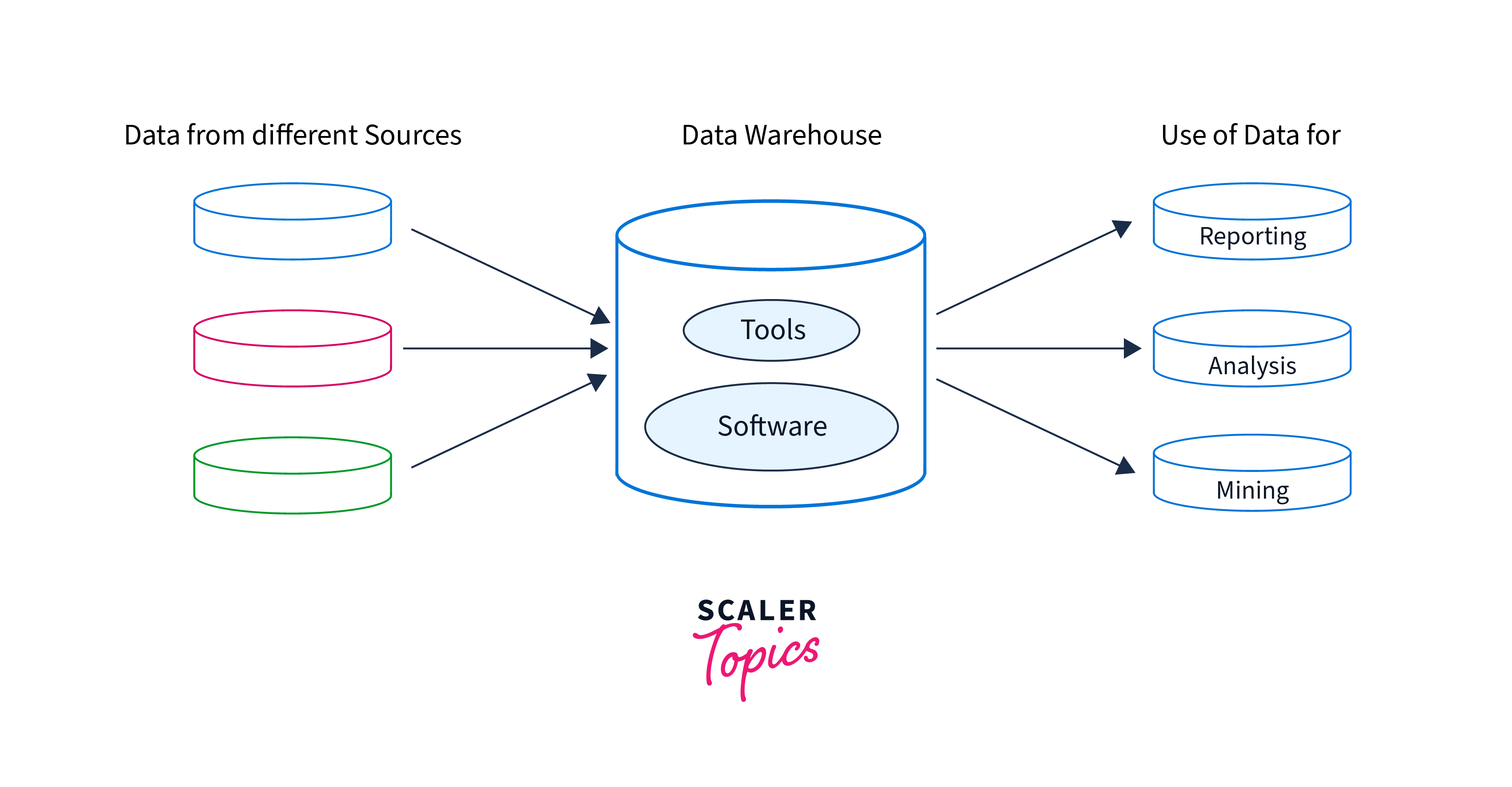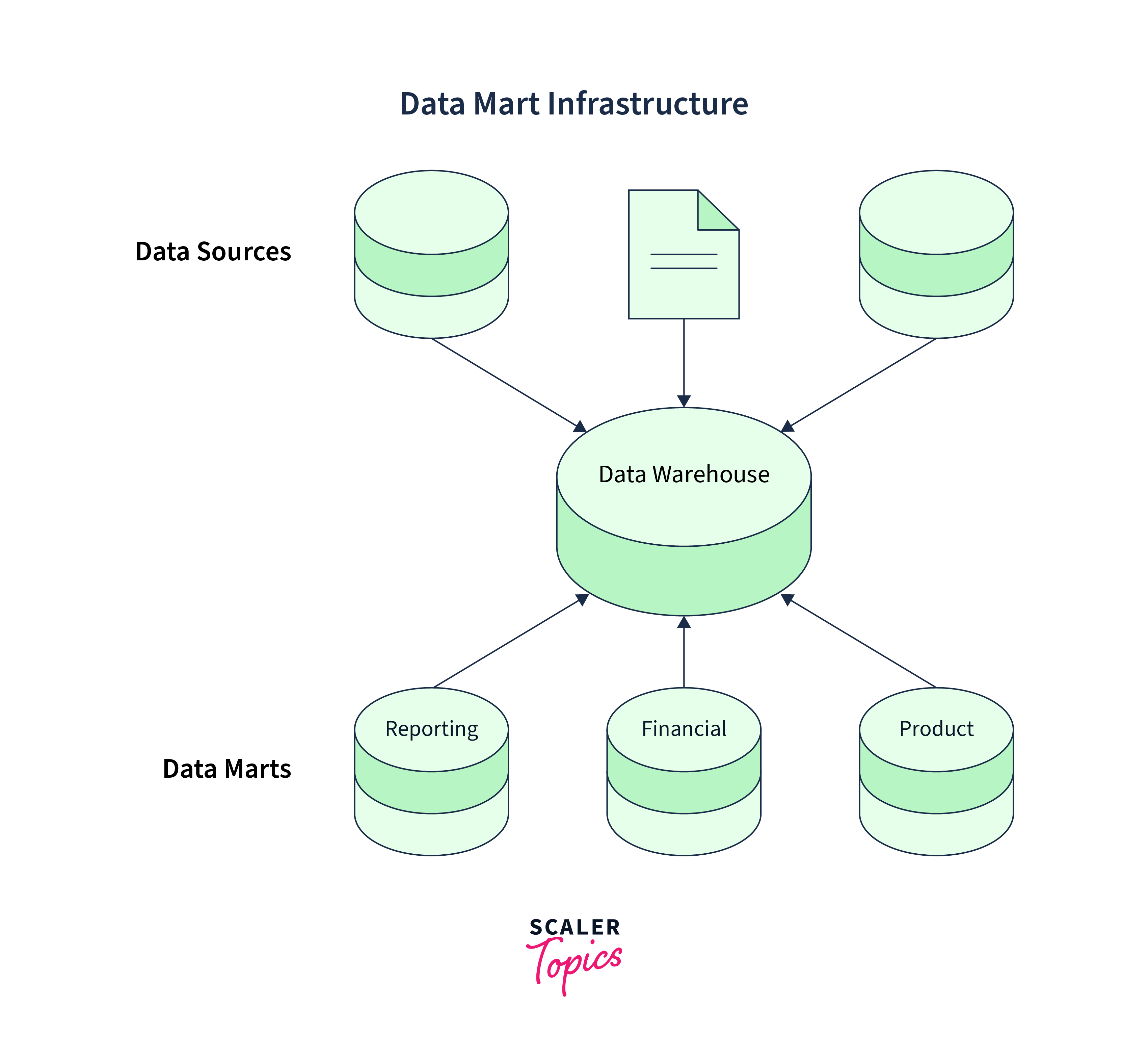Difference between Data Warehouse and Data Mart
Overview
A Data Warehouse and Data Mart serve distinct purposes. The former offers a broad view of an organization's data for strategic decisions, while the latter provides specialized, condensed data tailored to specific business sectors, catering to departmental needs and enabling focused analysis of inefficient data architecture.
What is a Data Warehouse?
A data warehouse is a centralized and integrated repository that contains huge amounts of structured and semi-structured data gathered from diverse sources inside an organization. It is intended to simplify sophisticated querying, analysis, and reporting while providing a full perspective of corporate processes.

To acquire data from different sources, transform it into a uniform format, and load it into the warehouse, data warehouses employ an Extract, Transform, Load (ETL) process.
- The staging area is where raw data is stored before it is cleaned and converted.
- The integration layer merges data from several sources into a single format.
- The storage layer holds structured data to facilitate querying.
- The presentation layer offers users tools and interfaces for accessing and analyzing data.
To know more, Data-Warehouse
What is Data Mart?
Before learning about the difference between a data warehouse and a data mart, let us learn about the data mart.
A data mart is a data repository focused on the needs of a certain set of users inside an organization. It is intended to meet the unique needs of departments or teams by offering simplified and simply accessible data collecting. Instead of a complete data warehouse, a data mart is more specialized and holds data important to a specific company function, such as sales, marketing, or finance.

Data marts improve decision-making efficiency with their restricted approach simplifying data governance and administration because the scope is lower than that of a full-scale data warehouse.
The process of creating a data mart involves extracting, converting, and loading (ETL) data from diverse sources, and then structuring and organizing it to meet the unique needs of the intended users. This process customizes the structure, speeds up query performance, and ensures that consumers obtain the required information quickly.
Key Difference between Data Warehouse and Data Mart
Let us now learn about the key difference between a data warehouse and a data mart.
A Data Warehouse is a centralized repository that combines data from many sources across an organization. It turns raw data into an organized format using the Extract, Transform, Load (ETL) process. Data Warehouses need significant storage and processing resources making them ideal for large-scale organizations.
A Data Mart is a smaller, more specialized subset of a Data Warehouse that is meant to meet the needs of individual departments or teams. Data Marts store data relevant to a certain business function, allowing quicker query response times and improved analytical performance.
Differences between Data Warehouse and Data Mart
The difference between data warehouse and data mart are shown below:
| Aspect | Data Warehouse | Data Mart |
|---|---|---|
| Scope | Comprehensive and enterprise-wide data storage | Focused on specific business areas or departments |
| Data Source | Aggregates data from various sources | Pulls data from a subset of data warehouse |
| Data Granularity | Generally coarse-grained data | Can include finer-grained, specialized data |
| Purpose | Strategic decision-making | Tactical and operational decision support |
| Data Structure | Complex data models and relationships | Simplified structures for specific needs |
| Implementation | More time and resources for setup | Quicker to implement and more targeted |
| Data Volume | Handles larger volumes of data | Handles smaller volumes of data |
| Performance | Slower for complex queries | Faster due to smaller data volume |
| Flexibility | Less agile due to data integration complexity | More agile and adaptable to changing needs |
| Maintenance | Higher maintenance efforts | Easier to maintain due to focused scope |
| Cost | Generally higher costs | Relatively lower costs |
Conclusion
- A Data Warehouse is a centralized repository that integrates data from multiple sources throughout an organization for complete analysis.
- A Data Mart is a smaller, more specialized subset of a Data Warehouse that is suited to the needs of a certain business unit.
- Data warehouses often store data at a fine granularity, useful for identifying enterprise-wide patterns and making strategic decisions.
- Data Marts retain data in more depth, catering to specific operational insights within a department or team.
- Data warehouses prioritize flexibility, allowing for various data kinds and sources affecting performance. Data Marts emphasize performance, containing pre-aggregated and pre-processed data to meet a department's unique analytical needs.
